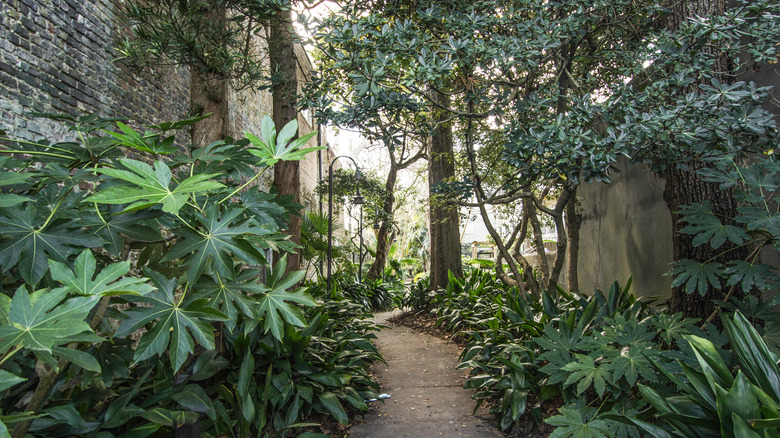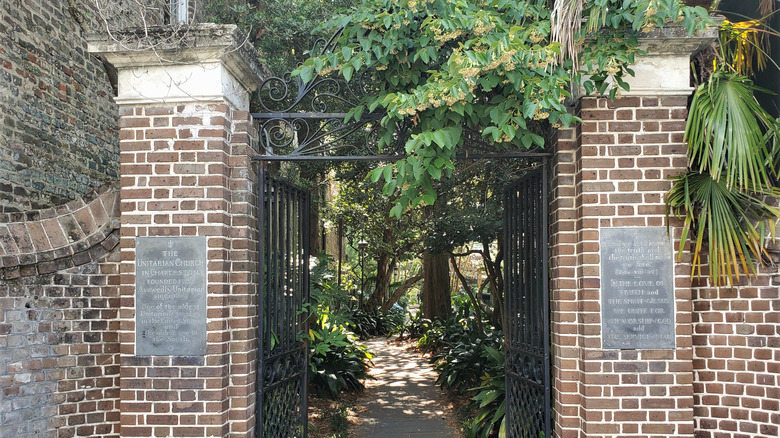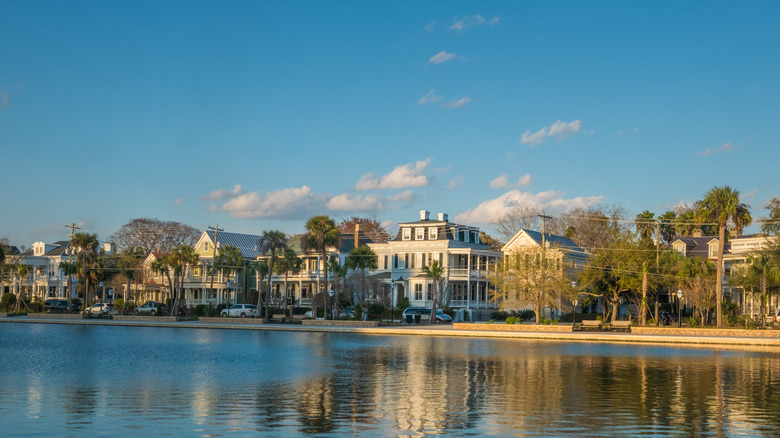Hidden In The Heart Of Charleston Is A Secret Lush Walkway That Shows Off The City's Serene Side
With its cobblestone streets, striking European architecture, and a litany of nearby beaches, Charleston is one of the best cities to visit in the southern United States. There's plenty to see and do in this small slice of the Lowcountry, but if you're looking for a tranquil escape smack in the middle of downtown, few spots are as enticing as the Gateway Walk. This little-known stretch of garden hides in plain sight as it meanders through the very heart of Charleston, yet its verdant landscapes are a far cry from the bustle of everyday city life.
Charleston sees nearly eight million tourists every year, but the Gateway Walk remains a relative secret. Running between the action-packed French Quarter and Harleston Village, the quaint walkway first opened in 1930 to mark the 250-year anniversary of Charleston (formerly known as Charles Towne). The Garden Club of Charleston was responsible for its creation, as its president, Mrs. C.P. McGowan, wanted to build something similar to the gardens she witnessed while visiting Paris.
Thanks to a variety of renovations over the years, the Gateway Walk is still accessible to this day. However, you'll need to know where to look for the walkway, as it can be quite elusive. Find it, and you'll be treated to several blocks of wrought iron gates, historic churches, and a quieter side of Charleston not often seen by visitors.
Charleston's Gateway Walk is a tranquil escape from downtown
There are multiple ways to enter the Gateway Walk, as it stretches across both the charming King Street and neighboring Meeting Street. However, the best place to start is Archdale Street. It's here you'll find the entrance to the secret walkway behind the iron gates of St. John's Lutheran Church. The pathway is open to the public, and there's no admission fee, so you're free to simply walk in from dawn to dusk. Keep in mind that various sections may be closed for maintenance throughout the year, so if a gate is locked or you see gardeners tending the plants, consider backing out and looping around to the next block.
After entering through Archdale Street, the narrow path carves across King Street before dipping behind the Charleston Library Society. This stretch of garden concludes at the Gibbes Museum of Art before crossing Meeting Street. From here, you'll continue along to the stunning Circular Congregational Church and St. Philip's Graveyard. The Gateway Walk ends at St. Philip's Church across Church Street, a popular place to stop for photos. If you pop in for a visit, be respectful of the property and the dozens of nearby grave markers.
Stroll through Charleston's other iconic gardens
The Gateway Walk is just the tip of the iceberg when it comes to Charleston's gardens. Few are as peaceful and tucked away as this, but you'll find several others just a short drive (or walk) away. Though it's not exactly a garden, Colonial Lake is a few blocks west of Archdale Street. Historic buildings line the outside of the lake, and you'll find a paved trail that's great for dog-walking or jogging. In the spring, you can enjoy plenty of flowers in bloom.
Venture to the northern end of the peninsula to find the 60-acre Hampton Park. This sprawling green space holds a variety of flowering trees, roses, and perennials, along with plenty of benches for relaxing. Plenty of walking paths are within the park, and it even has an on-site restroom plus plenty of parking. Note that Hampton Park is located next to The Citadel — a military college — and can become busy when classes are in session. If you decide you really need some peace and quiet, drive over to the unspoiled beaches of a nearby barrier island.
Charleston is home to a large number of pay-to-visit plantations, but consider only visiting these if they offer a historically accurate account of the estate. Plantations are irrevocably tied to slavery, and unless the properties are now uplifting Black voices, it's best to give them a pass. After all, there's plenty of beautiful Lowcountry to enjoy that's inclusive of everyone.


